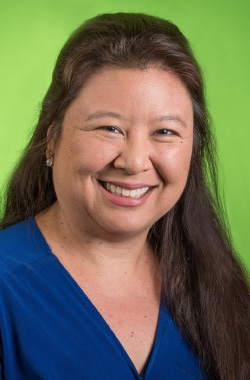A summer tan is a sign of skin damage, not skin health
- Category: Living Well, Skin Care
- Posted On:
- Written By: Dr. Candice Abuso

Here’s a great trivia question that is certain to stump a few people. What is the body’s largest organ? Many will say it’s the brain, stomach, or liver, but it’s none of the above. The body’s largest organ is the human skin. Yes, skin. Not only does it cover our entire body, but it performs many vital functions, so protecting your skin should be a priority every day, but especially so during those full sun days.
Damage by the sun goes skin deep
Most people think our skin is just a layering to cover our internal organs. While it does do that, the skin is also key to keeping you healthy, as it regulates our body temperature, stores water and fat, prevents water loss and the entry of bacteria, and helps our body produce Vitamin D, among other things. The skin is not simply what you see, but it goes much deeper than that as the skin consists of three layers:
- Epidermis: the thin outer layer of the skin that covers the body
- Dermis: a middle layer that contains many things, such as blood vessels, hair follicles and sweat glands
- Subcutaneous fat layer: the deepest later of skin, which helps conserve the body’s heat and projects the body from injury
When we are outside, we are exposed to light produced by the sun; that light is known as ultraviolet rays. The earth protects us from the most harmful rays, but two different forms of rays, UVA and UVB, do reach the ground, and if we don’t adequately protect our skin, it can age prematurely and wrinkle, or we can get sunburns or worse, skin cancer. Living in the South, where it’s warm and sunny most of the year, our long-term exposure to the sun is high, so we are all at risk for serious skin issues if we don’t take precautions. For some people, though, the risk of skin cancer increases if they have certain characteristics, such as:
- Light or neutral skin color
- Blue or green eyes
- Blond or red hair
- Have certain types or a large number of moles on the skin
- Have a family history of skin cancer
When it comes to the most severe form of skin cancer, melanoma, the Centers for Disease Control and Prevention (CDC) noted in 2018 that Louisiana recorded nearly 20 new melanomas diagnoses per 100,000 residents, making it the seventh leading cause of new cancer cases in the state. Melanoma starts with a mole that changes or a sore on the skin that won’t heal. There are visual signs that something could be wrong, and remembering those signs is as simple as knowing your melanoma ABC’s:
A: Asymmetrical – does a mole or spot have an irregular shape or look different on two parts?
B: Border – is the border of the mole or sore jagged or irregular?
C: Color – is the color uneven?
D: Diameter – is the mole or spot larger than a pea size?
E: Evolving – is the spot or mole changing over the course of a few weeks or months?
If you have any of the symptoms or are concerned about a spot, contact your doctor, as it’s better to have it checked out rather than let something go on for too long.
Five sun safety tips to reduce your risk of skin cancer
The sun’s rays are most dangerous during the hours of 10 am – 4 pm, so it’s best if you can avoid increased exposure during those times. Regardless of when you are outdoors, there are many steps you can take to protect your skin:
- Wear clothing that covers your arms and legs
- Wear a wide-brim hat and sunglasses
- Apply water-resistant sunscreen of at least SPF 30 on exposed skin and reapply every two hours or more if you are swimming
- Find some shade
- Avoid indoor tanning beds as users are exposed to high levels of UV rays
Getting a little sun exposure is healthy as it’s a natural way of your body producing Vitamin D, but if you spend a lot of time outside, regardless if it’s a full sunny day or cloudy, protect your skin, so it works correctly to protect you.
Dr. Abuso received her medical degree from Louisiana State University Medical Center- New Orleans, and completed her medical residency at the University of Tennessee. She is board certified by the American Board of Internal Medicine.
She joined the Medical Staff at West Jefferson Medical Center in 2000. She was born in Oaklawn, Illinois, and raised in Slidell, Louisiana. She attended Salmen High School and has lived on the Westbank since 2000.
With over 15 years of experience, she continues to practice because she enjoys being part of the Westbank community and getting to know her patients and their families.
She chose to practice internal medicine/primary care because it's important to not only manage the chronic disease but be proactive in preventing and managing complications of those diseases.
In primary care, Dr. Abuso hopes to empower her patients to take charge of their health and be active participants in their healthcare.
